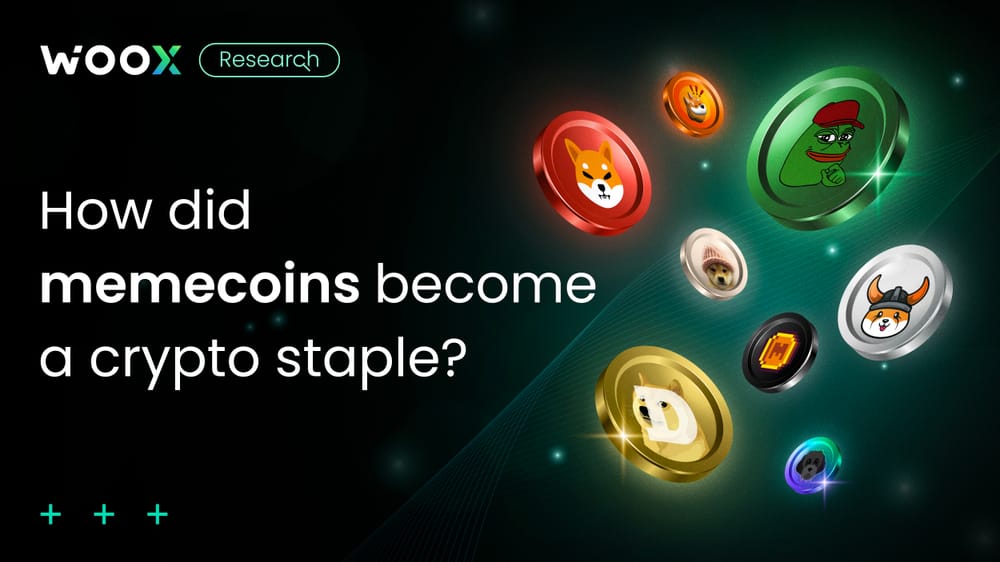How Did Memecoins Evolve from Joke to Crypto Staple?
Meet TRUMP — not the former president, but the token that has surged almost 900%.
Named Make America Great Again, the TRUMP token is a prominent memecoin within political themes, boasting a market cap of $601 million.
Cointelegraph reported a success story involving a trader who made a $2.7 million profit in just three days trading TRUMP tokens. Such narratives of wealth accumulation through memecoins are not uncommon. Similar stories have unfolded with other memecoins like DOGE, SHIBA, PEPE, and more recently, BRETT, PEIPEI, and MOTHER.
This is precisely why many individuals enter the crypto world: the pursuit of wealth.
Ref: https://www.coingecko.com/research
The crypto landscape has increasingly been under the sway of institutional investors and venture capitalists. This dominance brings the risks of significant future sell-offs and insider trading, potentially limiting opportunities for individual investors.
In response to growing dissatisfaction with institutional dominance, there is a noticeable trend towards favoring projects featuring 100% liquid tokens owned by community members rather than the project team, along with modest market values.
Memecoins, particularly those driven by community takeovers, fit this profile and are gaining traction. The total market capitalization of memecoins has now exceeded $55.10 billion, underscoring their growing role in the crypto market.
Ref: https://coinmarketcap.com/view/memes/
As the market evolves, the wealth effect and community enthusiasm surrounding memecoins are becoming increasingly evident. These community-driven projects offer a more democratized approach to crypto investing, providing everyday investors with opportunities to benefit from market movements.
But fundamentally, what are memecoins? What can we learn from the existing ones and expect from future memecoins?
Definition and history of memecoins
A meme is broadly defined as a unit of cultural information that spreads from person to person within a culture.
This concept was first introduced by evolutionary biologist Richard Dawkins in his 1976 book "The Selfish Gene." Dawkins coined the term "meme" by analogy with "gene," suggesting that memes, like genes, are subject to evolutionary pressures such as variation, mutation, competition, and inheritance.
The Internet paves a broader way for a meme to get viral faster within a bigger range, usually in images, videos, gifs, and jokes.
1kx research defines memecoins as cryptocurrencies that derive their value solely from the memes with which they are associated, essentially bringing financial value to the concept of memes.
Ref: https://mirror.xyz/1kx.eth/RgbEQvn1vgfzrE6GDTwk3rrNYQmyuwVgejtR0-6okRc
Under this definition, memecoins have been around as early as 2009 and have already undergone five different cycles.
First Cycle (2009-2013): This period saw the rise of proof-of-work (PoW) altcoins like Litecoin and BBQCoin, mainly for miners to allocate resources. Most memecoins from this era failed due to a lack of cultural longevity and accessibility.
Dogecoin, the first cryptocurrency based on an internet meme was created on Dec 8, 2013. Dogecoin became the biggest memecoin in market cap in the fourth cycle.
Ref: https://knowyourmeme.com/photos/581296-doge
Second Cycle (2014-2017): This cycle was fueled by the ICO boom and Ethereum’s rise. The ERC20 standard made launching coins easier. Projects with clear utility and purposes started to rise, while the number of memecoins during this period was relatively smaller. Examples were the Useless Ethereum Token, Dentacoin, and HAYCOIN.
The emergence of NFTs and collectible memes, such as Rare Pepes and Unisocks, introduced a new form of digital assets with significant cultural value.
Third Cycle (2020): DeFi Summer introduced ‘food coin’ yield farms that offered 10,000% APY (in memecoins) in exchange for having your tokens locked up in a Yam or a Pickle contract.
Fourth Cycle (2020-2021): The memestock phenomenon started by GameStock led to a surge in memecoin popularity, with Dogecoin and other crypto-native memecoins like Shiba Inu and Floki Inu gaining high valuations.
Dogecoin got endorsements from celebrities like Elon Musk, and peaked in May 2021, at a market cap of $90B.
Fifth Cycle (2023-Present): New memes, cultures, and ecosystems continue to evolve, with memecoins maintaining traction due to their community-driven nature and potential for significant financial returns, as mentioned before.
Hot memecoins in the present cycle
Based on existing memes
In 2024, memecoins rooted in popular internet memes continue to capture investor interest. Dogecoin and Shiba Inu, initially propelled by their viral canine-themed origins, maintain a considerable market presence. WIF, inspired by whimsical internet content, also attracts substantial trading volumes. Meanwhile, Pepe-related coins, such as PEPE and Brett, capitalize on the enduring popularity of the Pepe the Frog meme, spawning numerous related tokens that thrive on community-driven hype and cultural resonance.
Issued/Endorsed by celebrities
Celebrity-backed memecoins have surged, leveraging star power to drive investor interest. Mother, by rapper Iggy Azalea, and Jenner, by Caitlyn Jenner, exemplify this trend. These tokens often see rapid price movements following endorsements, as fans and speculators rush to invest, drawn by the allure of celebrity association and the potential for high returns.
Related to the US Election
Election-themed memecoins have also become prominent, with tokens like TRUMP, BODEN, and PEOPLE reflecting political sentiments. These coins experience spikes in activity and value during election cycles, driven by media coverage and public interest surrounding the US presidential election. The TRUMP token, in particular, has seen significant gains, embodying the intersection of politics and speculative investment.
Ref: https://platform.arkhamintelligence.com/explorer/entity/donald-trump
What’s not changed?
Memecoins have garnered attention for their explosive gains and the democratized, anti-establishment ethos they seem to embody. For many, they represent a form of financial rebellion against the wealthy elite and traditional financial institutions. However, behind the frenzy and hype, there is more to pound on.
Ever since the first cycle started in 2009, memecoins faced the problem of no real utility. Unlike traditional stocks backed by tangible corporate entities, memecoins are often founded on whimsical virtual concepts, such as a meme, video, or catchphrase.
This lack of inherent value and real-world utility makes them particularly vulnerable to pump-and-dump schemes, where prices are artificially inflated and then crashed, leaving many investors with significant losses. The death of most early memecoins underscores the inherent risks.
Despite these significant downsides, memecoins continue to attract interest due to their potential for high returns. However, investors must approach them with caution. Investors should be wary of the hype and conduct thorough research before diving into this speculative market.
—
The content above is neither a recommendation for investment and trading strategies nor an investment offer, solicitation, or recommendation of any product or service. The content is for informational sharing purposes only. Anyone who makes or changes the investment decision based on the content shall undertake the result or loss by himself/herself.
The content of this document has been translated into different languages and shared throughout other platforms. In case of any discrepancy or inconsistency between different posts caused by mistranslations, the English version on our official website shall prevail.


